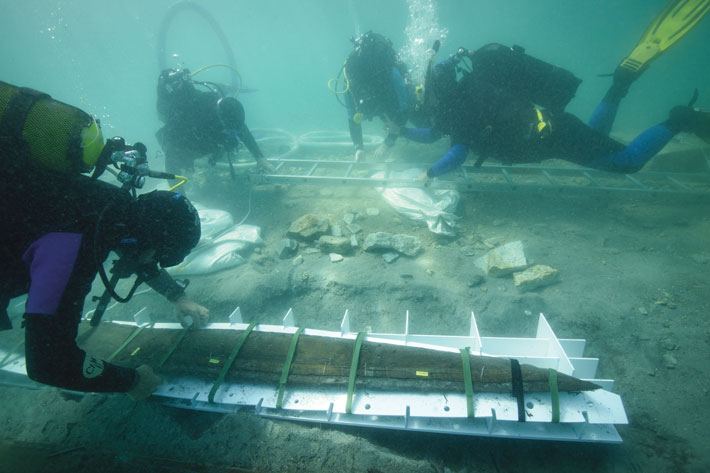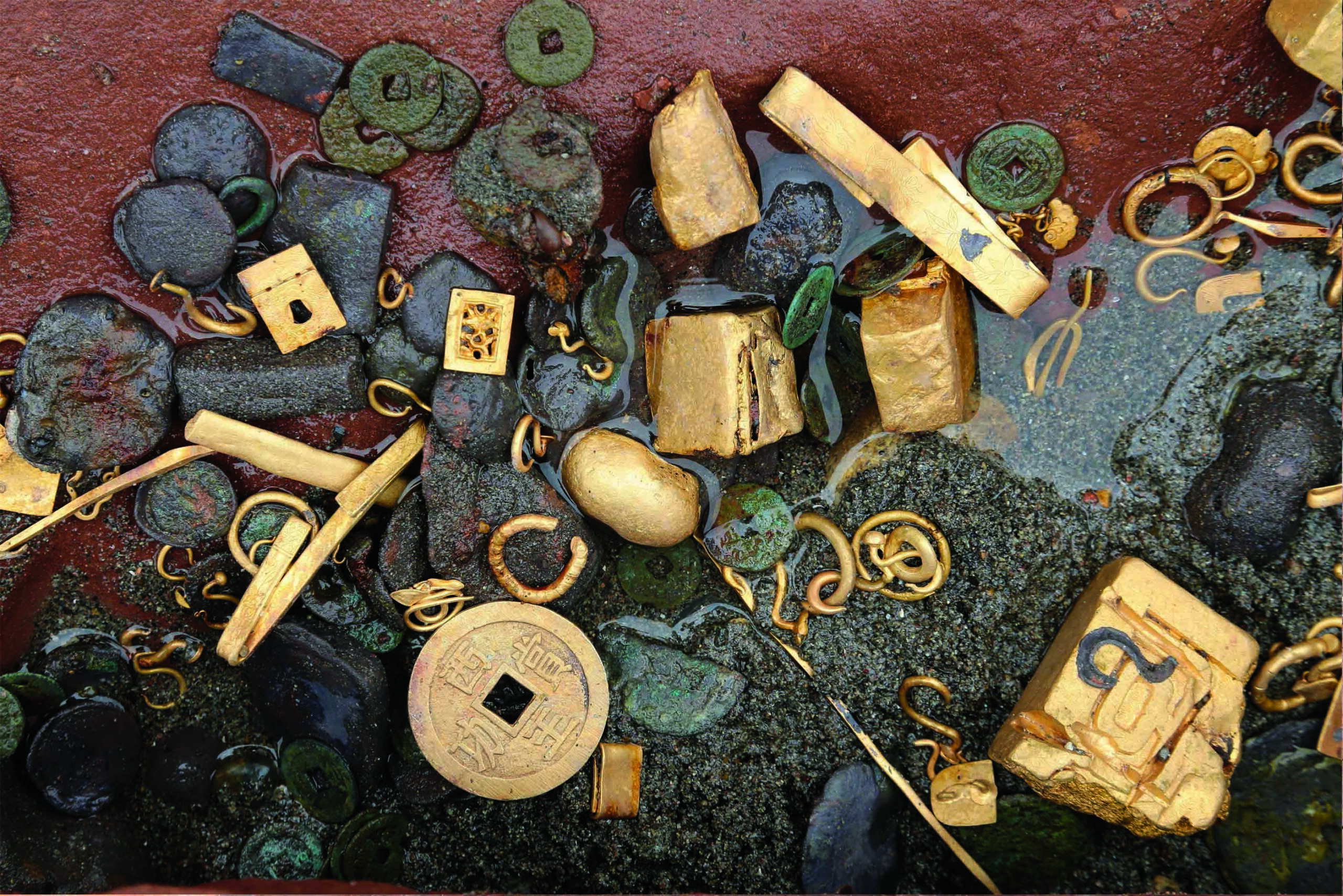
Off the coast of present-day Croatia in the Adriatic’s Bay of Zambratija, a team of archaeologists recently retrieved the remnants of the oldest hand-sewn boat discovered in the Mediterranean, dating to between the twelfth and tenth centuries B.C. First spotted in 2008, the vessel was partially excavated in 2011 and fully excavated, documented, and reburied in 2013. In summer 2023, the team brought to the surface eight planks, the largest of which measures 23 feet long, as well as several additional pieces of the boat. The delicate removal process required creating and placing supports matching the measurements of the planks before lifting them out of the water to be stabilized.
The vessel was constructed of planks and frames of locally sourced elm, alder, and wild pear that were sewn together, likely with plant fibers. The hull was made watertight by filling spaces between the planks with thin wood pieces that were held in place by a glue made from pitch, or resin, boiled with other materials. The boat was likely made by local people known as the Histri—renowned both for nautical acumen and piracy—and used to transport goods and people and for fishing. It is a unique example of a boat-sewing tradition that differs from the hand-sewn boats of a Greek tradition known from written sources and archaeological remains. “The find is important for the region and for the history of Mediterranean navigation,” says archaeologist Giulia Boetto of the French National Center for Scientific Research. “It’s of a specific northern Adriatic tradition which has no parallel elsewhere in the Mediterranean. This hand-sewn boat tradition survived in the northern Adriatic until the end of the Roman Empire.”











